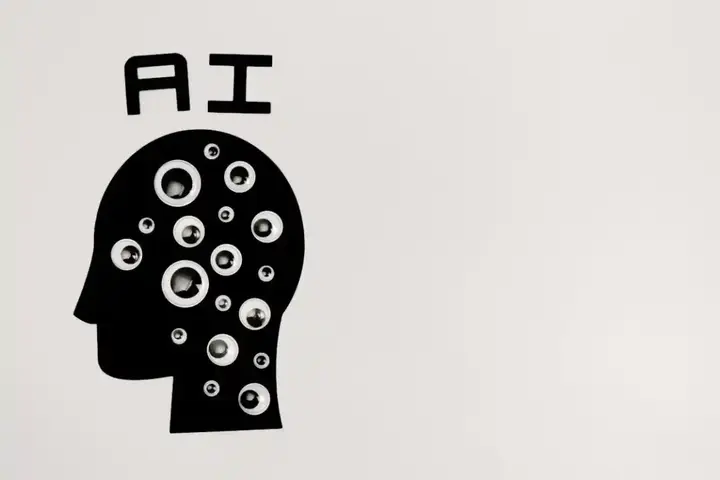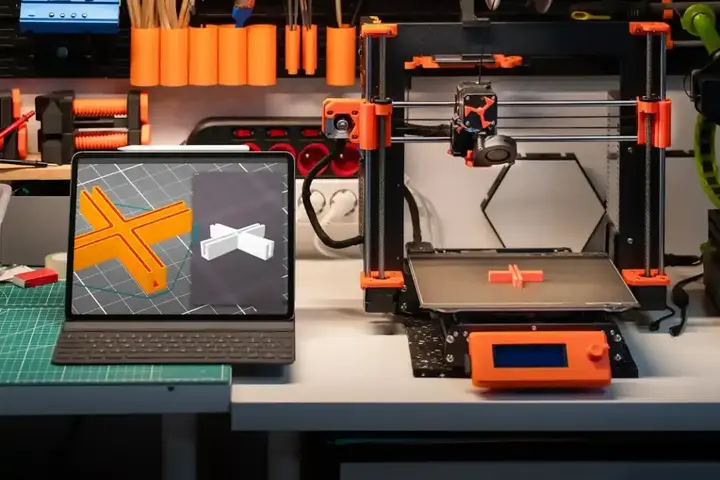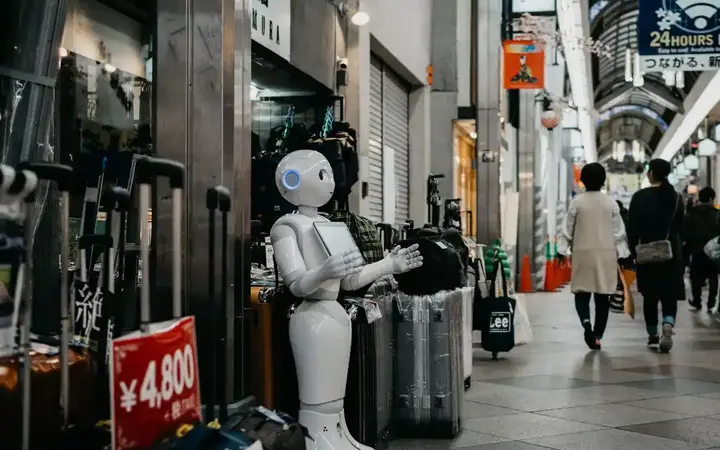The most important technical terms that everyone should know
We have to point out an important question here: is it necessary to know the technical terminology? For the future, the answer is yes, but in a normal situation where not all humans have technical interests, we can say that there is no definitive answer to this question, as it depends on your needs and goals. If you: Technology is mainly used for daily activities such as surfing the Internet, email, and social media, knowing some basic technical terms will suffice. If you want to better understand technology and use it more effectively, learning more technical terminology will be helpful. If you work in technology or plan to work in it, knowledge of technical terminology is essential.
Show key points
- Understanding technical terminology depends on individual goals—while it's essential for tech professionals, basic terms suffice for casual users.
- Artificial Intelligence enables machines to simulate human intelligence for tasks like decision-making, language comprehension, and pattern recognition.
- The Internet of Things (IoT) connects physical devices to the internet, allowing them to collect, exchange, and act on data autonomously.
- ADVERTISEMENT
- Cloud computing offers on-demand access to computing resources like storage and software through the internet, making data and applications more accessible.
- Blockchain technology securely records data in a decentralized system and is widely used in digital currencies, supply chain tracking, and identity verification.
- Virtual and augmented reality technologies enhance user experience by enabling immersive simulations and overlaying digital content onto the physical world.
- Technologies like 3D printing, cybersecurity, cryptocurrency, and machine learning are transforming industries and redefining how we create, secure, and interact with digital systems.
Recommend
1. Artificial Intelligence (AI):

Artificial intelligence refers to the ability of machines to simulate human capabilities such as learning and problem solving. Artificial intelligence is used in many applications such as facial recognition, machine translation, and self-driving cars. It is a branch of computer science concerned with creating intelligent systems that can think, learn, and solve problems like humans. Machines are able to mimic human intelligence, including from the decision-making process.
Artificial intelligence involves the development of algorithms and computer programs that can perform tasks that normally require human intelligence, such as pattern recognition, decision-making, and natural language comprehension. These systems can analyze large amounts of data, detect trends, and make predictions based on past experience.The technology has the potential to revolutionize many industries, including healthcare, finance, and transportation.
For example, AI-powered medical diagnostic tools can help doctors make more accurate diagnoses, while AI algorithms can optimize financial portfolios and improve city traffic flow. However, there are also concerns about the ethical implications of AI, such as job displacement and bias in algorithmic decision-making. As AI continues to advance, it is important to consider societal impact and ensure that these technologies are developed and used responsibly. It is important for companies and individuals to stay informed of its developments and impacts.
2.Internet of Things (IoT):

It is a network of physical devices connected to the Internet that can collect, send, and receive data. IoT refers to a network of physical devices that enable them to connect to the Internet and exchange data. IoT devices are used in many applications such as smart homes, smart cities, and healthcare.
These devices can include everything from smartphones, smart speakers, wearables to devices, vehicles, and industrial machinery. By connecting these devices to the internet, they can communicate with each other, collect and process data, and make decisions independently.
One of the main benefits of IoT is its ability to make our lives more comfortable and efficient. For example, in a smart home, IoT devices can control temperature, lighting, security, and other aspects of the home, all from a smartphone or voice command.
In smart cities, IoT devices can monitor and monitor traffic flow, lighting, waste management and other services to improve the quality of life for residents. In healthcare, IoT devices can be used to monitor patients remotely, track adherence to medications, and automate patient care processes. This can improve patient outcomes, reduce healthcare costs, and improve overall healthcare delivery.
However, the widespread adoption of IoT also raises concerns about privacy, security, and data protection. With so many devices connected to the internet, there is a risk of data breach, hacking, and unauthorized access. As the IoT ecosystem continues to grow, it will be important for businesses and governments to implement robust security measures to protect user data and maintain trust in this technology.
3. Cloud Computing:

It is a model for providing computer services over the Internet, such as storage, networks, and software. It is a model for providing computing and data services over the Internet. The cloud is used to store data, run applications, and analyze data.
4. For Big Data:

Big data refers to a huge amount of data collected from various sources. Big data is used to improve decision-making in various fields such as business, healthcare, and government. Those vast amounts of data are collected and analyzed using advanced technologies.
5. Blockchain:

In short, it is a distributed digital record for storing information securely and reliably. Blockchain is a system for recording information in a secure and decentralized manner. Blockchain is used in many applications such as digital currencies, supply chain tracking, and identity management.
6. Virtual Reality (VR):

Virtual reality is a technology that enables you to experience a three-dimensional virtual environment. For simplicity we can say that it is a computer-generated simulation environment that users can interact with using special devices.
Virtual reality technology usually involves the use of a headset or virtual reality glasses, which immerse users in a digital world where they can look around, move and interact with objects. This can create a very immersive and realistic experience that feels like you are in a different place or environment.
This amazing technology is used in a wide range of applications, including gaming, training, simulation, education, healthcare, architecture, design, and more. They can also be used for virtual tours, allowing users to explore virtual replicas of real-world locations.
Overall, VR technology has the potential to revolutionize how we experience and interact with digital content, offering new possibilities for entertainment, learning, communication, and more.
7. Augmented Reality (AR):

Augmented reality is a technology that adds digital information to the real world. Virtual reality and augmented reality technology are used in many applications such as entertainment, education, and training. It is based on the integration of digital elements into the real world using a smartphone camera or a special device.
This technology allows users to overlay computer-generated images, videos, and animations with their real-time view of the real world. This creates an immersive and interactive experience that can improve the way we interact with our surroundings.
For example, in entertainment, augmented reality is used in mobile games like Pokémon Go, where gamers use their smartphones to capture real-world virtual objects.
In education, augmented reality can be used to create interactive learning experiences, such as virtual anatomy or re-enactment of historical events.
In training, augmented reality can be used to simulate dangerous or expensive scenarios in a safe and controlled environment.
Augmented reality has the potential to revolutionize the way we interact with technology and the world around us. It has the potential to enhance our experiences, improve our understanding of complex concepts, and provide new opportunities for creativity and innovation.
8. 3D Printing:

Three-dimensional printing is a technique for creating three-dimensional objects from a digital model. 3D printing is used in many applications such as manufacturing, medicine and education.
In manufacturing, 3D printing enables rapid product prototyping, reducing the lead times and costs associated with producing physical prototypes. It also enables the production of complex geometries that may be difficult or impossible to achieve through traditional manufacturing methods.
In medicine, three-dimensional printing is used to create implants, prosthetics, and even parts of the body such as organs and tissues. This technology has revolutionized the manufacturing of medical devices, allowing better outcomes for patients and improved quality of life. in education,
Three-dimensional printing is used to teach students how to design, prototyp, and manufacture. Students can create and test their designs in a practical and interactive way, helping to develop critical thinking, problem-solving and technical skills.
Three-dimensional printing is a versatile technology that transforms industries and enables individuals to create innovative solutions to complex problems. Customization capabilities, rapid prototyping, and cost-effectiveness make it a valuable tool for a wide range of applications.
9. Cybersecurity:

Cybersecurity is the practice of protecting electronic systems and networks from attacks. Cybersecurity is becoming increasingly important as we become increasingly dependent on technology.
10. Cryptocurrency:

They are decentralized virtual cryptocurrencies that can be used as a medium of exchange. It is a type of currency that uses cryptography to secure transactions and control the creation of new units. Bitcoin and Ethereum are some of the most popular cryptocurrencies.
11. Machine Learning:

Machine learning is a branch of artificial intelligence that allows machines to learn from data without being explicitly programmed. Machine learning is used in many applications such as image recognition, behavior prediction, and data analysis. It is a type of artificial intelligence that allows systems to learn from data and improve their performance without being explicitly programmed.
![]()
What is deepfakes? And is it possible to know it?
What is deepfakes? And is it possible to know it? more- ADVERTISEMENT
![]()
The world's oceans: species, environments, life and the magic of colors
The oceans, covering over 70% of Earth, are changing color due to climate change and human impact. From deep blue in the Pacific to green or milky turquoise in coastal or Arctic waters, these shifts reveal changes in marine life and health, making ocean conservation more vital than ever. more- ADVERTISEMENT
![]()
Time poverty: modern distress and how to escape from its grip
Despite all our modern tech advantages, many feel trapped in a cycle of busyness, constantly short on time. This sense of “time poverty” drains well-being and productivity. The key to breaking free? Align with what truly matters, simplify life, practice mindfulness, and build healthier ways to cope with stress. more- ADVERTISEMENT
![]()
Many amazing things your nails can tell you
The Many Surprising Things Your Fingernails Can Tell You more- ADVERTISEMENT
![]()
What happens to cancer cells when they die?
What happens to cancer cells when they die more- ADVERTISEMENT
![]()
How did Boeing lose so badly to SpaceX?
Boeing, once the dominant force in spaceflight, is struggling to keep up with SpaceX, which has already launched 11 crews to the ISS. Despite delays and setbacks, Boeing hopes its Starliner capsule can still compete, though its future depends heavily on finding a new launch vehicle. more- ADVERTISEMENT
![]()
Tranquility and Beauty in Djerba Island in Tunisia
Djerba, or the "Island of Dreams," enchants with its pristine beaches and rich history. Combining the charm of the Mediterranean, its multicultural heritage, and the spirit of local life, it is an ideal destination for relaxation and adventure amidst breathtaking natural landscapes and authentic cultural experiences. more- ADVERTISEMENT
![]()
What are smart laptops? Is it really practical?
What are smart laptops? Is it really practical? more- ADVERTISEMENT
![]()
AI inspires creativity: artists and musicians use AI for their creations
AI is reshaping creativity, helping artists and musicians explore new styles and techniques. Tools like Soundraw let anyone compose music quickly, while artists like Ruby Barat use AI to transform classic art. Though some fear it may dilute originality, AI is opening bold new paths in creative expression. more- ADVERTISEMENT
![]()
How did you start blogging music?
How did music notation begin more- ADVERTISEMENT





















